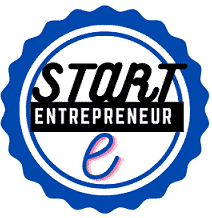With the onset of the web and subsequent delivery of the smartphone, the enterprise fashions of some banks and other fiat-based cost service suppliers have since been upended. Furthermore, fintechs providing disruptive funds capabilities have rapidly gained traction across the globe – encroaching into the domains of many items and providers.
One necessary consider fintechs’ arsenal has lengthy been their ability to create onboarding and fulfilment journeys which are straightforward to make use of and hyper-personalised, in addition to newer cost type factors for end prospects, similar to contactless near-field-communication payments and “QR scan-and-pay”.
Fintechs have additionally proven extra nimble in tapping into alternative processing and blockchain-based clearing infrastructures exterior of correspondent banking preparations. One criticism, nevertheless, of some innovations outdoors the regulated sphere, is that they might not have always met the stringent safety and anti-money laundering controls anticipated by regulators and societies.
The next step within the evolution of funds would be an upgrade to current interbank clearing arrangements in fee networks and infrastructures, undergirded by distributed ledger technology. This must be ubiquitous for each high-value and low-value funds working globally, and round the clock, whereas still successfully preventing the illicit use of monetary providers.
A November 2021 report from Juniper Research instructed that use of blockchain could reduce cross-border settlement prices by over $10 billion a year by . Additionally famous in the report is that fintech-developed blockchain options are already delivering payment efficiencies over legacy methods.
Blockchain’s appeal is as a end result of of a quantity of components
Blockchain technology can be the catalyst for innovation in next technology funds techniques for a few key causes.
Firstly, knowledge immutability and transparency are basic characteristics of the blockchain, which is enforced via its cryptographically enhanced, tamper-proof, and append-only decentralised ledger structure. By offering a single immutable shared supply of truth for payer and beneficiary, blockchain minimizes inefficiencies, frauds, or manipulation of economic audit trails, thus guaranteeing a safe and sturdy transaction processing infrastructure.
Secondly, blockchain is designed to be decentralised, and rides on top of distributed ledger infrastructure and consensus mechanism to assist continuous operations, resulting in its flexibility for network arrangements with or without a central authority or intermediaries. This means that blockchain methods carried out on a wider scale will inherently possess high fault tolerance and redundancy.
For payments, a wholesale blockchain network which is designed to additionally clear high-value transactions can maintain monitor of all settlements, with close to real-time syncing of ledger records of every monetary establishment. This ensures higher – and even round the clock – availability of the payments infrastructure to end clients.
Finally, blockchain-based methods primarily utilise ‘smart contracts’ which are self-executing contracts that automate previously laborious guide operations.
Smart contracts dramatically improve financial transaction effectivity, permitting automatic, condition-based worth motion throughout the blockchain as well as atomic settlements. Inefficiencies (such as handbook restore and mismatches in processing home windows across a quantity of parties) are minimized or eradicated.
As a end result, blockchain-enabled solutions outcome within the functionality and capacity to course of both high-value and low-value payment transactions and finalise settlements a lot faster (T+0) and at a lower value than right now, where settlement can be T+2, or longer. As there may be almost no reliance on handbook processing, these options can also function by way of weekends and main holidays.
Both blockchain technology and linkages of real-time prompt settlement market infrastructures provide the foundation for instant clearing, in each home and cross-border payment contexts. The sensible means to improve clearing and settlement in payments incrementally, notably for cross-border funds where there are tens of 1000’s of pre-existing corridors, can be to utilise a mixture of bilateral real-time linkages with application programming interfaces (APIs), linkages of market infrastructures and blockchain-enabled networks.
In the interim, it’s likely that linkages of real-time settlement infrastructures for low-value transactions will proliferate in parallel to the expansion of blockchain-enabled fee and clearing networks, because the latter requires larger convergence in technology necessities and standards. Ultimately, nonetheless, between the two, blockchain-based clearing networks are a more flexible and scalable option for processing a spread of high-value wholesale and low-value retail funds.
Multiple emerging blockchain use cases
In current years, the worldwide banking and financial industry has moved decisively, first to conduct experiments and pilots, and now to embrace blockchain technology. This gives rise to some key opportunity battlegrounds in the funds panorama that both traditional banks and fintech gamers are vying for.
One instant battleground is over burgeoning demand for secure, cost-effective, 24×7 real-time cross-border funds. This demand is instantly associated to the expansion of e-commerce and remittances, and the need for contactless payments in public transportation and service provider collections from vacationers (with behaviours having modified significantly because of the world pandemic).
In addition to payments, the monetary industry is actively creating blockchain-based options in different areas. The technology is being tested across asset lessons and across domains, from fairness and debt capital markets, to rights in collective investment autos, foreign trade and derivatives trading, as well as in trade and supply chain finance.
There are a number of areas the place these solutions are having impact, and could be doubtlessly transformative in the coming decade:
* On-demand, cross-border, real-time funds capability – Blockchain-based payment networks supply close to prompt cross-border fee and settlement capabilities round the clock. Juniper Research estimates global e-commerce payment transactions will exceed $7.5 trillion by 2026, up from $4.9 trillion in 20212.
* Tokenised financial assets – Tokenisation is the process whereby an underlying monetary asset (tangible or de-materialised) is converted into a digital token that acts as its proxy.
* Cryptocurrency to fiat foreign money conversions – Crypto exchanges reported more than $14 trillion in trading volume last yr based on The Block Research3.
* Stablecoins & Central Bank Digital Currency (CBDC) – The two hottest stablecoins (Tether and USD Coin, both pegged to the US Dollar) just lately passed $50 billion and $25 billion in market cap respectively. Another important development has been CBDCs – digital fee instruments issued by a country’s central financial institution, akin to physical fiat foreign money however in digital kind recorded on a blockchain.
* GameFi & Metaverse NFTs – GameFi combines the terms ‘game’ and ‘financial’ and refers to play-to-earn blockchain video games. A digital gaming environment is enabled and orchestrated utilizing digital currencies (often cryptocurrencies) and non-fungible tokens (NFTs). Additionally, Gartner estimates that by 2026, 25% of individuals will spend no less than one hour a day in the metaverse for work, shopping, training, socializing or entertainment4.
The need to innovate, join and collaborate
Global cost networks have all the time been characterised by a point of fragmentation and diversity. Payment service providers or financial establishments assemble their propositions via a combination of constructing, partnering and outsourcing fashions to entry clearing methods and for price effectiveness.
It is imperative for monetary institutions to put cash into updating their payment infrastructure past traditional fiat-based preparations and methods to sustain market relevance, capture flows from new business fashions, and enable different providers. An instant sensible move could be to associate with like-minded monetary institutions to connect with blockchain-enabled cost methods which provide close to immediate cross-border cost capabilities.
Collaboration is vital to driving innovation. One such example is the blockchain-based clearing and settlement platform developed by Partior – a three method partnership between DBS, J.P. Morgan and Temasek – which aims to revolutionise wholesale cross-border funds.
DBS believes that interoperability throughout multiple technology platforms and networks is important to rising the relevance of the monetary industry for each high-value and low-value payment contexts. In turn, this will promote the effectivity and availability of clearing and settlements. We thus proceed to leverage blockchain technology whilst we enhance our linkages to immediate settlement infrastructures.
Our approach is knowledgeable by the belief that sooner or later, blockchain will undergird the core of future fee networks, complementing point-to-point connectivity and easy-to-use purposes for end customers.
Consistent with this approach, we tailor our solutions to allow different banks, financial establishments and large firms to plug into blockchain platforms with great ease. We achieve this through the use of present connectivity arrangements, bypassing the necessity for our companions to invest in personnel and technology right away, while concurrently enabling participation in blockchain-enabled clearing networks to other monetary establishments.
At DBS, we want to assume that we are big enough to have the capacity to invest in payment infrastructures and newer technologies, and small enough to be nimble and effective. We readily welcome engagement from the monetary group to discover the complete extent of the opportunities available as we advance together towards the future of blockchain-enabled monetary companies.





